
Since 2020, cohort-based learning (CBL) and cohort-based courses have been on the rise. And the timing’s not surprising. The pandemic gave people extra time to upskill and reskill through online learning, but because traditional online courses often don’t address our human desire for closeness, connection, and community, newer and more social to learning approaches were needed.
Now that more people have jumped on the cohort-based learning bandwagon, the data about its effectiveness has been quite illuminating. Research suggests that self-paced MOOC courses have low retention, with completion rates between 3-6%. Cohort-based courses, on the other hand, have much higher completion rates – 85%, for example, in this Harvard Business School online course.
So what’s the magic behind cohort-based courses? Is it worth making this e-learning part of your online course business? And if so, how would you do it?
Read on to learn more.
What is Cohort-Based Learning?
So, how do we define cohort-based learning? A cohort may be defined as a group of people who have a particular purpose or common cause. So, with CBL, you’re just not studying on your own. Rather, you’re progressing through a course concurrently with a group of other students, from start to finish. Often class sizes are small, but with the right structure, judicious use of automation tools, and well-managed peer-to-peer learning, cohort-based course can scale to dozen or even hundreds of learners.
You might be wondering, “How does this differ from the traditional classroom model?”
Well, in most ways, it doesn’t. Cohort-based courses have a synchronous element with an expert instructor present, which means they run in real-time alongside your fellow cohort members or classmates. The main difference is that these days, “cohort-based” refers mostly to the delivery of this model online.
Typically, cohort-based courses have fixed start and end dates, just like traditional school or university courses. For this reason, they’re less flexible than self-paced courses. You might be able to take a cohort-based class from anywhere, but not at any time. Additionally, the community and social learning that cohort-based learning provides is just one of many benefits that give it a unique edge over fully self-paced, asynchronous courses.
The Benefits of Cohort-Based Courses
Cohort-based courses offer the best of both worlds when it comes to online vs in-person learning, for both your students and your online business. The model marries the support you’d get from live instruction and fellow classmates with the flexibility of distance education.
Let’s explore these benefits from both the student’s and business’ perspective:
Benefits from the Student’s Perspective
1. Higher chance of completion
When students start a course, they’re typically motivated to complete the course and apply their new knowledge and skills. But with self-paced courses, it’s much too easy to continually put things off and prioritize other tasks. When the student does finally circle back, they may have lost interest or forgotten reason they took the course in the first place.
Cohort-based courses combat this problem by using specific start and end dates and, in most cases, being open to enrollment only at specific time – like once or twice a year. As a result, students are motivated by a greater sense of urgency as well as by a desire to be viewed as quitters by their peers.
But the main reason cohort-based course completion rates practically eclipse those of self-paced courses is because students aren’t learning in a vacuum, relying only their own willpower, without any collaboration or recognition. Rather, when students share the learning journey with others, they’re part of something larger than themselves, which is more engaging and inherently more motivating.
2. Extra Accountability
Accountability is another reason why cohort-based learning dominates when it comes to successful course completion rates. When students have the opportunity to interact – especially in real-time – with fellow students and instructors, they feel more accountable.
Just think about it: When you’re alone in an office, it’s easier to slack off. But when you’re working on a team that depends on you, or you can feel your boss’ and/or coworkers’ eyes on you, it lights a flame under your butt.
The same goes for cohort-based courses. In this learning model, there are set schedules and deadlines, which makes it harder to procrastinate. Unlike the “learning vacuum” that self-paced courses create, students are part of a learning community. They won’t want to let their peers down by missing classes and/or not participating. People outside of themselves have expectations of them.

3. Opportunity to learn with/from peers
A core driver of human motivation is social influence and relatedness. And that’s a key reason why cohort-based learning is so effective. Social influence and relatedness can show up in two opposing ways – cooperation and competition. When students learn in a cohort, they have the opportunity to work together, which creates a sense of inclusion and mutual respect – both intrinsically rewarding. However, the opportunity to work alongside other students and view their progress also can also lead to healthy competition.
To avoid feeling left behind, students will work harder to excel. Better yet, they can also provide support to one another via real-time discussions about their ideas and experiences in the class. Even self-paced learning platforms often try to enhance motivation by incorporating collaborative learning tools like discussion forums and leaderboards. That’s because the power of social learning cannot be understated”.
4. More active learning
Student retention and successful course completion all boils down to engagement. And engagement is an active process. Whether collaborating with other students, asking the instructor questions, or participating in class discussions and projects, cohort-based courses are highly conducive to active learning. In this course delivery model, learning becomes a “do” word.
To better understand this point, take a look at the six levels of higher-order thinking described in Bloom’s Taxonomy, a tool often used to help explain how humans learn.
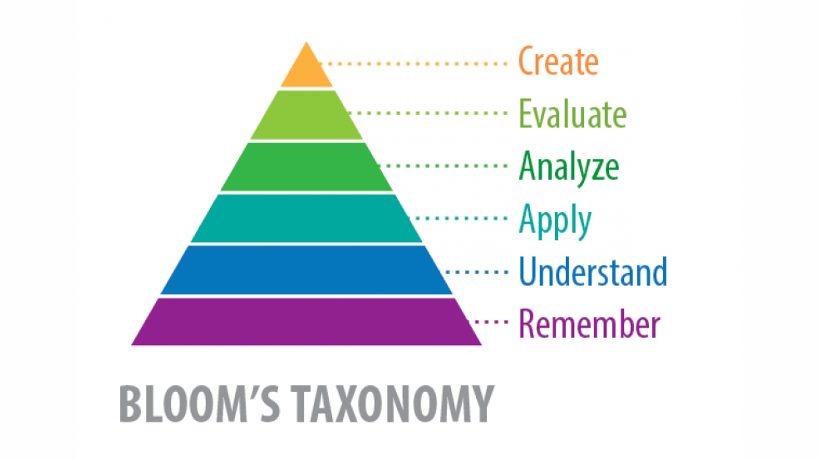
The lowest levels are “remembering” and “understanding.” Self-paced courses address these types of learning levels/ objectives quite well. But they struggle with the higher levels, such as “applying”, “analyzing”, “evaluating”, and “creating”. Note how these higher levels are all “doing” words!
So, not only is “doing” more fun and engaging, it supports higher-order thinking, which cements knowledge and increases student success. And the more success students experience, the likelier they’ll enjoy and complete the course.
5.More personalized, just-in-time learning
There are countless benefits to live instruction. For one, students can get real-time support. When there’s no waiting period between the question and the response, they can avoid the frustration of bottlenecks when completing assignments or comprehending concepts. Second, when students have the opportunity to ask a question right when it arises, then they can apply the answer right away, which is highly reinforcing. Just-in-time learning gives the instructor the opportunity to see the problem and guide the student to the solution instead of just giving the solution to students.
Let’s say, for example, you’re taking a web development class, and the code isn’t rendering properly. In a cohort-based course, the instructor can view a screenshare of the website and hint to the student what’s wrong. Once the student has a “eureka” moment, he/she can immediately apply the fix right away (higher-order thinking). But if there’s a delay in the answer, then the solution is given out of context, forcing the student to memorize it (lower-order thinking) because the solution was received passively. (Note, too, that the help given to one student often benefits many or all of the other students in a cohort-based learning experience because all students get to witness it.)
Benefits from the Business’ Perspective
As a course creator, your students are one of the most important parts of your expertise-based business. What benefits them ultimately benefits your business. So, in this section, we’ll focus on how cohort-based learning benefits your business’s bottom line.
1. Makes selling easier
One of the biggest selling points of a course is the testimonials and the results data you can share. Because cohort-based learning yields higher retention and course completion rates, your brand and courses will have higher credibility and awesome stats to back them. The more positive the student experience, the more they will want to share. And the more success stories, the more potential buyers will believe that they, too, can succeed.
On the other hand, with the dismally-low student retention and course completion rates of self-paced courses, you’ll be hard-pressed to find students that have positive experiences to share. And among the few that do, when that automated prompt for course feedback pops up at the end of the course, they will often opt out.
Cohort-based classes give students a chance to put a face to the instructors and connect with them. So when a real instructor asks them in real-time, they’ll be more motivated to give a shining review.
2. Lets you charge more
All of the benefits for students that we covered above translate into cohort-based courses being perceived as higher in value than a typical self-paced learning experience. And higher value perception, of course, opens up the possibility for higher prices.
In general, any cohort-based learning experiences you offer should be placed much higher up your Value Ramp than self-paced, on demand courses.
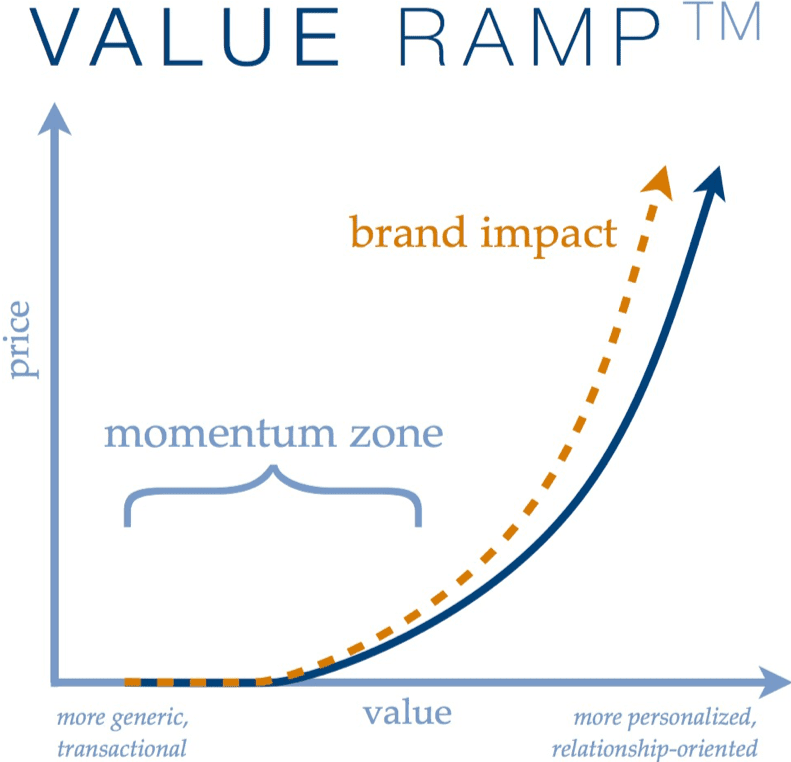
3. Stands you out from competition
While CBL is rapidly gaining popularity, the online course market is still saturated with standard, on-demand eLearning courses. The way of the day seems to be “set it and forget it”. But the market’s grown far more competitive. Studies show that, to maximize student success, learners need and even prefer more than a standard self-paced experience.
Access to a live instructor and the opportunity for live engagement is often a huge selling point for potential buyers and can stand you out from other course creators in your niche.
4. Fuels word-of-mouth marketing
How often do you hear people raving about some awesome self-paced course they took? Probably not that often. Usually, solo activities don’t yield very interesting stories. So people don’t really think about them in social situations, much less share them.
But with cohort-based learning, students are part of a learning community that is fun, inspiring, educative, and engaging. They’re not only inclined to share their wins within the community, but outside of it, too. Thus, the social learning aspect of CBL naturally yields interesting stories where your courses will be inadvertently marketed (a key difference between testimonials).
5. Leads to higher quality feedback
When you create any type of course, you should do your best to zero in on a specific topic and audience. But very few course creators will hit the mark right out of the gate. To do that, you need high quality feedback from your learners.
As with testimonials, it’s much to get feedback from students you have engaged with as a live instructor. Students in cohort-based courses are often eager to share their thoughts, which can yield all kinds of great insights. Based on the feedback you gather, you’ll be able to not only improve, but personalize your course more and home in on a tighter audience. After all, it’s better to build a “cult following” than take a one-size-fits-all approach.
How to Create Cohort-Based Courses
With all these benefits to cohort-based courses, you’re probably itching to know how to make your own. Fortunately, there are countless tools to do the heavy lifting. The hardest part is the planning. But you’ll be fine if you follow these three essential steps:
1. Figure Out Where Cohort-Based Learning Fits Your Audience
While self-paced, on-demand courses can be great for serving your broader audience in a relatively generic way, cohort-based courses usually have a more niche focus that applies to a smaller segment of your audience, one with a more specific set of shared needs. You might, for example, want to use a cohort-based approach for offering a masterclass to your more advanced students, for example, or a bootcamp for your newbies.
Whatever the focus of your course, homing in on a narrower part of your audience is not only important for marketing purposes; it will ultimately direct your course content and help you create targeted learning objectives. Only then will you be able to create relevant, valuable, and focused courses. When zooming in, ask yourself the following questions:
- What is experience level of the group I plan to target?
- What are their common problems, opportunities, and/or knowledge and skill gaps?
- Are there aspects of identity – whether personal or professional – group members are likely to share?
- What are their desired learning outcomes?
- How will a cohort-based approach contribute to achieving those objectives?
Look for sub-groups within your larger audience that are facing complex issues and opportunities and that would place high value on interaction with you and peers. The sub-group you focus in on doesn’t have to be small – again, cohort-based courses can involve relatively large number of students – but the members of the group need to have enough in common in relation to your chosen topic that they will be able to work well together withing a cohort.
Keep in mind that some course topics are just inherently conducive to collaboration and feedback. Even if it’s for a personal hobby, like a writing or music production course students will benefit more when they can share their projects, discuss ideas with other students, and receive personalized feedback from live, expert instructors.
Also, recognize that cohort-based courses are great for accountability because they usually involve:
- Start and end dates;
- Class schedules with real-time instruction;
- A learning community that you can forge relationships with;
- Collaboration and discussions; and
- Assessments/assignments that are viewed and marked by real people.
There are many reasons why cohort-based courses have high completion rates. One of them is that course creators understand the unique motivations of their audience, and thus, what’s needed to pave the path to their success.
2. Leverage the Cohort Approach When Designing Your Course
Now that you’ve determined where cohort-based learning aligns with your audience, it’s time to infuse this approach into every aspect of your course design.
For example, unlike self-paced courses, you’re working with a cohort of students. And their level of experience or background knowledge is bound to vary. So, when designing your curriculum, it’s best to start from the basics. That way, you’ll ensure that everyone’s on the same page before moving forward. You might have the first course lesson serve as a refresher, or assign a reading for students to complete before the course start date.
Speaking of start dates, you’ll need to create a curriculum with a clear schedule that shows when and how long each of your class sessions will be. Having this knowledge beforehand will help hold learners accountable. Your syllabus should also outline due dates for any assignments and assessment they’ll have.
Your curriculum design should also provide students with ample opportunities for group collaboration. Because cohort-based courses operate on a schedule, with students doing the same work at the same time, it’s easy to come up with group projects, discussions, and opportunities for them to support one another. Regularly scheduling group activities across your curriculum is one of the best ways to leverage the cohort approach when designing your course.
Another unique advantage of cohort-based learning is that it grants students direct access to their instructors. But asking questions during class is one thing, and seeking one-on-one help from an instructor is another. For example, some students might have a question about a grade they received on a project, or they might be embarrassed to admit that they’re struggling with a concept that everyone else seems to have grasped.
A good workaround for this is to add “office hours” to the syllabus. Or better yet, poll students at the beginning of the course about their preferred office hour times! This’ll add tremendous value to your course.
Step 3: Choose the right tools
To truly harness the power of cohort-based learning, you’ll need access to a variety of handy tools and features. But, given the numerous platforms for creating and delivering cohort-based courses on the market, choosing the right tools can be a formidable feat.
One way to greatly narrow down the options is to choose an all-in-one platform with many native tools (versus third-party integrations). Not only does it enhance the user experience for your students, who’ll only need one platform and login to access all your course features. But you’ll save a ton of money on countless integrations.
With that said, here’s a list of some key native features/capabilities that your ideal cohort-based learning platform should have:
A video-conferencing tool
Most cohort-based learning platforms don’t come with built-in webinar platforms like Zoom or Google meet, so this is the one area where in-app integration is a must-have. After all, you’re going to need a solid video-streaming service in order to run remote, real-time classes with minimal disruption to operations.
Keep in mind that, while you will may deliver a significant amount of cohort-based content live, it is still very valuable to record the video for students to review, reference, and discuss, as appropriate. This is especially handy for students who are unable to attend live sessions due to unforeseen circumstances. And you might also adapt these recordings into a webinar series, thus further enhancing your ability to market and monetize your courses. (Remember, everything is a production event!)
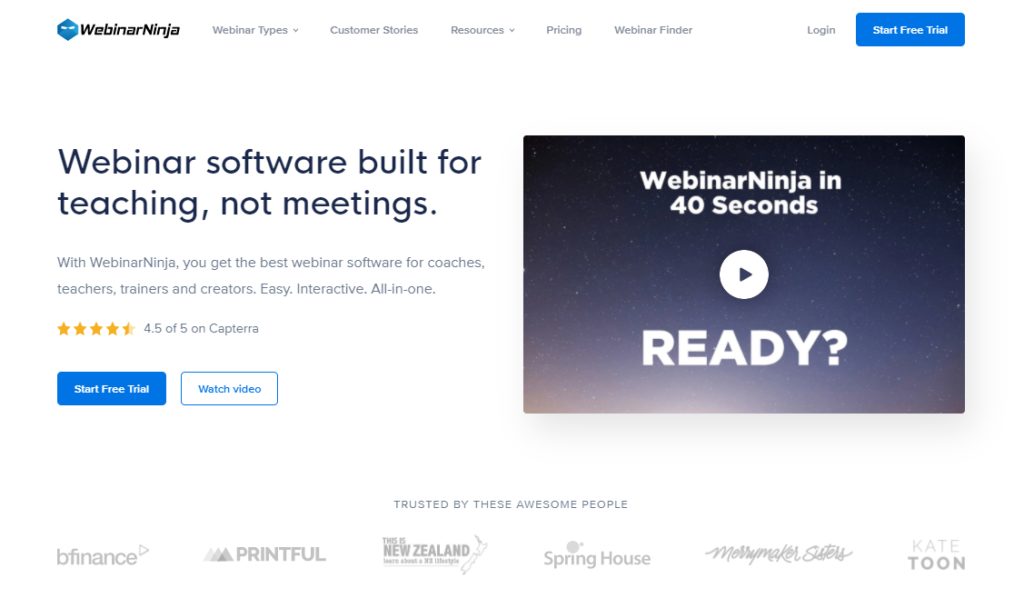
A community portal
The core of cohort-based learning is community. So, the ideal platform should have a community portal that brings students together to engage in meaningful dialogue about the content. In a community portal, students can use discussion boards to post and answer questions or polls in a forum-like manner. Reddit’s a great example of this.
The best community spaces also include private messaging channels/instant messaging and peer-review features for students who’d like to share their work and collaborate in groups. If you recall the example of a music production course, where external feedback is necessary for students to thrive, then the ability for students to share their assignments and receive constructive feedback – not only from instructors but other students – is essential.
Some community portals even have fun gamification features like leaderboards, which allow students to collect points and/or see how they rank based on their performance in the course. A core drive of intrinsic motivation is not only collaboration/cooperation, but healthy competition. So, a community portal with leaderboards will do wonders for your course’s success.
Community portals are not only key to building meaningful relationships with other students, but also holding them accountable for their learning. They foster intrinsic motivation in students by making them feel like they’re part of something greater than themselves.
You may decide to run your cohort-based learning on a platform that was built specifically for hosting online communities, or you may want to go with a course platform that has strong community features. For good options in both categories, see our review of the best online community platforms.
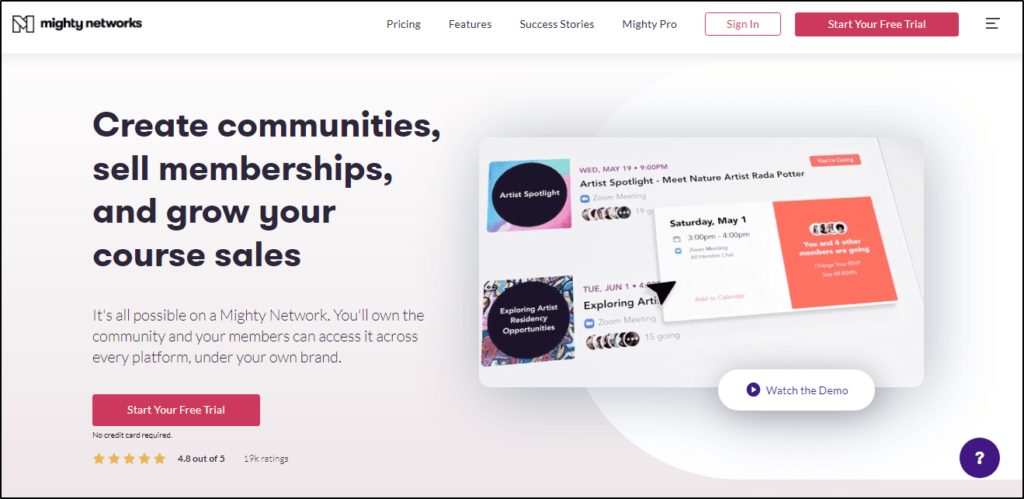
Assignments & Assessments
Speaking of holding students accountable, you’re going to need a way to ensure that everyone’s staying on track. And there’s no better way to do this than with assignments and assessments. So, make sure your cohort-based learning platform accommodates them.
Fortunately, most online course platforms do the heavy lifting in this regard by providing quiz-building tools with multiple question types (e.g., multiple choice, multiple rematching, sequence, etc.). And the best part is, these types of quizzes often have automatic grading. You can have each quiz at the end of each lesson or module and even use these quiz results to show how students rank amongst one another based on their cumulative assessment scores.
However, with cohort-based courses, it’s also important to cement knowledge with thought-provoking projects that have a real instructor’s eyes on them. Thusly, the best learning platforms not only allow students to submit assignments in a variety of different formats (e.g., PowerPoint, Word, PDF, MP3s, MP4s, etc.), but they also allow instructors to directly respond to student submissions with feedback.
Monetization features
Chances are, you’re reading this article because you’re hoping to monetize your courses. So let’s get to the bottom line – profits. First of all, you’ll need a cohort-based learning platform that easily lets you scale your business as it grows.
Whether it charges a small monthly fee, charges per course, or charges based on the number of students, the ideal platform should offer tiered payment plans with additional features as you move from basic to premium. For example, lower-tiered or basic plans might lack in branding customization options or marketing capabilities, but when you’re just getting off the ground, then that might seem like overkill when you can always upgrade plans later.
Moreover, you’ll not only need flexibility with how you pay for the platform, but how the platform allows students to pay you. Does it allow for fixed-price or subscription-based payments? Can you leverage your community portal to create added revenue streams, such as paid memberships or paid virtual events? And how much of your unique brand can you infuse into your platform (e.g., logos, color schemes, fonts, favicons, etc.)? Being able to experiment with your monetization methods is a major asset!
What about marketing features, such as email campaigns about new courses or upcoming products? Many great platforms do the legwork when it comes to keeping new and prospective customers in the loop about your offerings.
Not to mention, because your cohort-based courses will be hosted remotely, you might have students from all over the world, which means you’ll need a payment gateway like Stripe, PayPal, Authorize.net, or some combination thereof that accepts different currencies. There’s nothing worse than losing potential customers due to such minor logistical oversights. So make sure your platform is flexible in this regard.
A native mobile app
This feature is often overlooked, despite how crucial it is. One of the huge benefits of cohort-based courses for students is not only the flexibility of taking them remotely, but also while in transit. So, keep your eye out for a platform that has a native mobile app (like, for example, LearnWorlds).
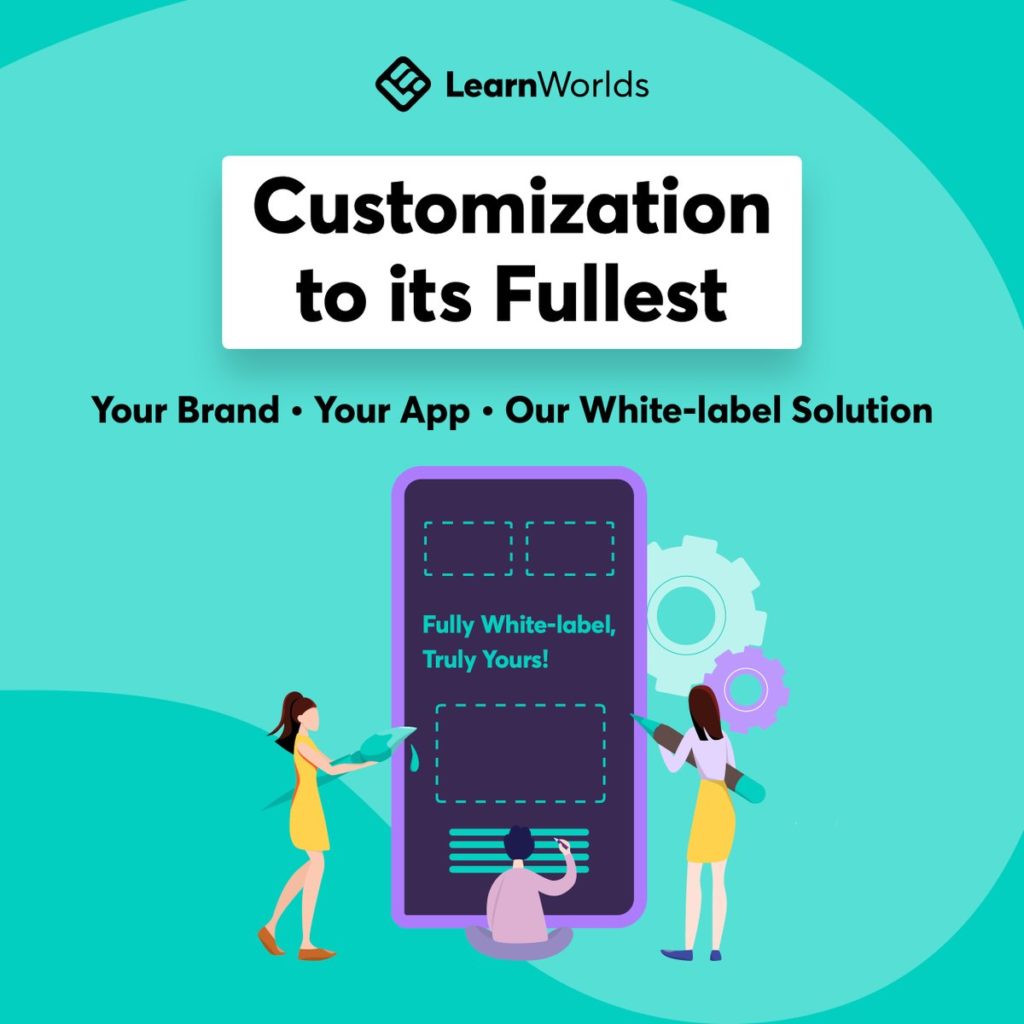
That said, not all mobile apps are created equal. So, if your platform does offer one, then look out for important features, like a user-friendly interface and privacy options for users.
Final thoughts on Cohort-Based Courses
Cohort-based courses are catching on, so keep ahead of the curve and jump on the bandwagon! Not only are these course types easy to create, but their unparalleled student success rates will provide you with an extra edge when it comes to differentiating yourself in the online course market.
By Sydney Mansaray for Learning Revolution
Table of Contents



